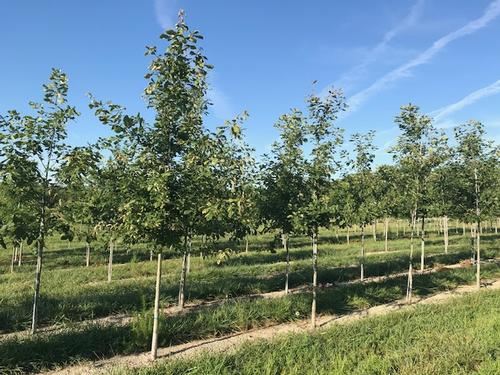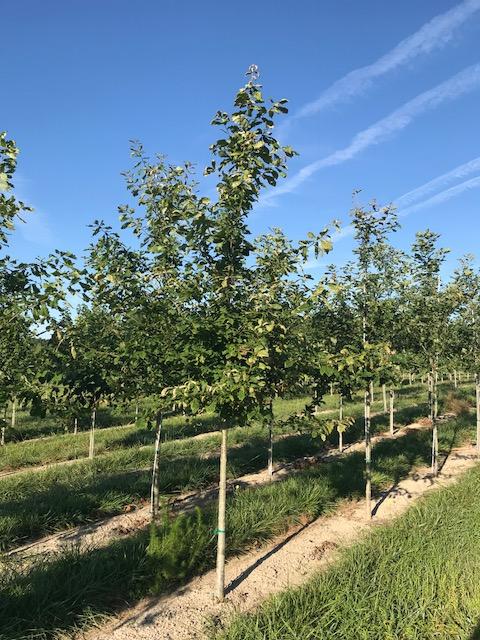



Quercus michauxii
Swamp Chestnut Oak
Swamp chestnut oak is a great choice for low-lying areas with wet soil since it grows naturally in swampy areas and low woodlands of the southeastern coastal plain and the Mississippi River valley.
The dense crown is rounded with an irregular spread. The acorns are sweet-tasting and can be eaten from the tree, unlike other acorns from other types of oaks. Acorns are typically not produced until the tree reaches 20-25 years old. As with most native oaks, it is a high-value wildlife plant providing food and shelter for birds, mammals, and pollinators.
Chestnut Oak is adaptable to urban conditions and makes a great shade tree for a larger yard or park.
- Native deciduous tree
- Dark red fall color
- Can tolerate wet soil
